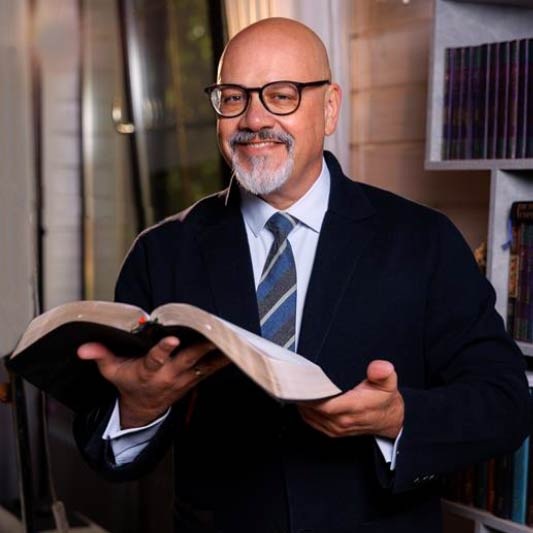The Catholic claim that Mary of Nazareth is the New Ark of the Covenant is a profound theological proposition, particularly highlighted in the Gospel of Luke, which draws on rich Old Testament imagery and early Christian tradition. This perspective posits that Mary, as the mother who bore Jesus—identified as the Word of God, the Bread of Life, and the High Priest—fulfills the role of the Ark of the Covenant, the sacred vessel that symbolized God’s presence in ancient Israel. Proponents, including Church Fathers like Hippolytus and Athanasius, as well as contemporary scholars like Brant Pitre, point to linguistic connections, such as the “overshadowing” motif in Luke 1:35 and Exodus 40:35, and narrative parallels between Luke 1:39–56 and 2 Samuel 6, to argue that Luke intentionally portrays Mary as the New Ark. The sequence of visions in Revelation 11:19–12:2, where the Ark appears in the heavenly temple followed by the Woman Clothed with the Sun, further supports this interpretation. However, the argument faces challenges, including textual ambiguities, alternative readings, and the need for careful exegesis to avoid overgeneralization. This essay explores the biblical significance of the Ark of the Covenant, evaluates the proposed parallels between Mary and the Ark, examines the Ark’s reappearance in Revelation, and critically assesses the strengths and weaknesses of this typology, while reflecting on its implications for Catholic-Protestant dialogue.
The Ark of the Covenant, as described in Exodus 25:10–22, was the holiest object in ancient Israel, a gold-covered acacia wood chest designed to house sacred items and serve as the epicenter of God’s presence. Measuring two and a half cubits long, one and a half cubits wide, and one and a half cubits high, it featured a golden atoning cover (kapporet) flanked by cherubim, whose wings spread over the lid (Exodus 25:17–21). The Ark contained only the tablets of the Ten Commandments, symbolizing God’s covenantal word, as clarified by 1 Kings 8:9 and 2 Chronicles 5:10. A common misreading of Hebrews 9:4 suggests it also held a jar of manna and Aaron’s budded rod, but these were placed “before” the Ark (Exodus 16:33–34; Numbers 17:10), a correction that underscores the importance of textual precision. The Ark’s sanctity stemmed from its role as the site of divine encounter: “There I will meet with you; and from above the atoning cover… I will speak to you” (Exodus 25:22). Housed in the Holy of Holies within the Tabernacle and later the Jerusalem Temple, it marked the pinnacle of God’s localized presence, with holiness intensifying from the Promised Land to Zion, Jerusalem, and the Temple’s inner sanctum (Isaiah 57:15, 66:1).
The Ark’s significance extended beyond the sanctuary, manifesting God’s power in dynamic ways. In Joshua 3, it parted the Jordan River, enabling Israel’s entry into the Promised Land. In Joshua 6, it led the procession around Jericho, causing the city’s walls to collapse. In 1 Samuel 4–6, its capture by the Philistines brought divine judgment, toppling Dagon’s idol and afflicting cities until its return. The Ark’s journey to Jerusalem under David in 2 Samuel 6 is particularly relevant for the New Ark typology. When Uzzah touches the Ark to steady it and is struck dead (2 Samuel 6:6–7), its holiness is starkly affirmed. David, initially angry and fearful, leaves the Ark at Obed-Edom’s house for three months, where it brings blessings (2 Samuel 6:8–11). He later escorts it to Jerusalem, dancing in a priestly ephod amid shouting and music (2 Samuel 6:12–15). These narratives portray the Ark as both a conduit of divine blessing and a perilous object requiring reverence, setting the stage for comparisons with Mary.
Catholic theologians argue that Mary fulfills the Ark’s role by bearing Jesus, who embodies the Word (John 1:14), Bread of Life (John 6:35), and High Priest (Hebrews 4:14–16). Early Church Fathers like Hippolytus (c. 170–236) describe Mary as the “incorruptible ark” carrying Christ’s body, while Athanasius (c. 296–373) calls her the “dwelling place of God the Word,” clothed with purity as the Ark was with gold. The Vatican’s The Shrine (§18) draws a parallel between the cloud overshadowing the Tabernacle (Exodus 40:34–35) and the Holy Spirit overshadowing Mary (Luke 1:35). Brant Pitre, in Jesus and the Jewish Roots of Mary, identifies five parallels between 2 Samuel 6 and Luke 1:39–56, suggesting Luke intentionally frames Mary as the New Ark: (1) David “arose and went” to Baale-Judah (2 Samuel 6:2), as Mary “arose and went” to Judah’s hill country (Luke 1:39); (2) David questions, “How can the ark of the LORD come to me?” (2 Samuel 6:9), as Elizabeth asks, “Why is this granted to me, that the mother of my Lord should come to me?” (Luke 1:43); (3) David, in a priestly ephod, dances before the Ark (2 Samuel 6:14), as John the Baptist, of priestly lineage, leaps in Elizabeth’s womb (Luke 1:41); (4) David leaps with shouting before the Ark (2 Samuel 6:15–16), as John leaps and Elizabeth shouts (Luke 1:41–42); and (5) the Ark stays at Obed-Edom’s for three months (2 Samuel 6:11), as Mary stays with Elizabeth for about three months (Luke 1:56).
These parallels, however, face critical scrutiny. The phrase “arose and went” in 2 Samuel 6:2 (anestē kai eporeuthē, LXX) and Luke 1:39 (anastasa… eporeuthē) is similar but not identical, lacking the conjunctive structure in Luke, and is a common biblical expression (e.g., Genesis 12:1). Additionally, 2 Samuel 6:2’s “from Baale-Judah” suggests movement away from Judah, unlike Mary’s journey to Judah’s hill country, undermining the geographical link. David’s question reflects fear after Uzzah’s death (2 Samuel 6:9), while Elizabeth’s expresses awe and gratitude (Luke 1:43), differing in emotional tone, though a shared sense of unworthiness may loosely connect them. The priestly rejoicing and leaping/shouting parallels are robust, with David’s dance and John’s leap, coupled with shouting, aligning closely, especially given John’s priestly lineage (Luke 1:5). The three-month timeframe is suggestive, but Luke’s “about three months” (hōs mēnas treis, Luke 1:56) versus the Septuagint’s precise “three months” (mēnas treis, 2 Samuel 6:11) reduces its specificity, as approximate durations are common in narratives.
The “overshadowing” argument is strong, with episkiazō appearing in both Luke 1:35 and Exodus 40:35 (LXX), suggesting Mary, like the Tabernacle, is filled with God’s glory. However, the absence of “cloud covered” (ekalypsen, Exodus 40:34) in Luke 1:35, replaced by “the Holy Spirit will come upon you” (epeleusetai, Luke 1:35), weakens the linguistic tie. Variations between the Septuagint and Masoretic texts further complicate comparisons, as the Septuagint’s Torah manuscripts may differ from the Hebrew texts available today. The contents argument—that Mary bore the Word, Bread, and Priest as the Ark held the tablets, manna, and rod—is compelling but undermined by the fact that only the tablets were inside the Ark. Mary’s temporary pregnancy (nine months) also limits the analogy, though her ongoing motherhood, affirmed at the cross (John 19:26–27), may counter this objection. The breadth of Jesus’ ministry, fulfilling multiple Old Testament roles (prophet, priest, king), risks diluting the specificity of the Ark typology, as nearly any concept can be traced to Christ.
Revelation 11:19–12:2 strengthens the Catholic case, with the Ark’s appearance in the heavenly temple followed by the Woman Clothed with the Sun, possibly indicating a unified vision, as seen in Revelation 5:5–6 (Lion and Lamb) or 7:4–9 (144,000 and multitude). The artificial chapter break, introduced by Stephen Langton in the 13th century, may obscure this connection. The Ark’s heavenly presence, absent from the earthly Temple after its presumed destruction (2 Kings 25:8–10) or hiding by Jeremiah (2 Maccabees 2:4–8), suggests a transcendent reality, potentially symbolized by Mary as the Woman. However, Revelation 11:19 could refer to the covenant itself or the heavenly archetype (Exodus 25:9, 40), and the Woman’s cosmic imagery (Revelation 12:1) aligns more readily with Israel or the Church, complicating a solely Marian reading.
The New Ark typology is robust but not definitive. The “overshadowing” motif, leaping/shouting parallels, and Revelation’s sequence are persuasive, supported by early Church Fathers. However, textual differences, the commonality of narrative phrases, and the Ark’s exclusive contents weaken the case. Protestant skepticism, rooted in sola scriptura






SUPPORT AND GIVE
May the Lord bless you and keep you!
COUNT ME IN